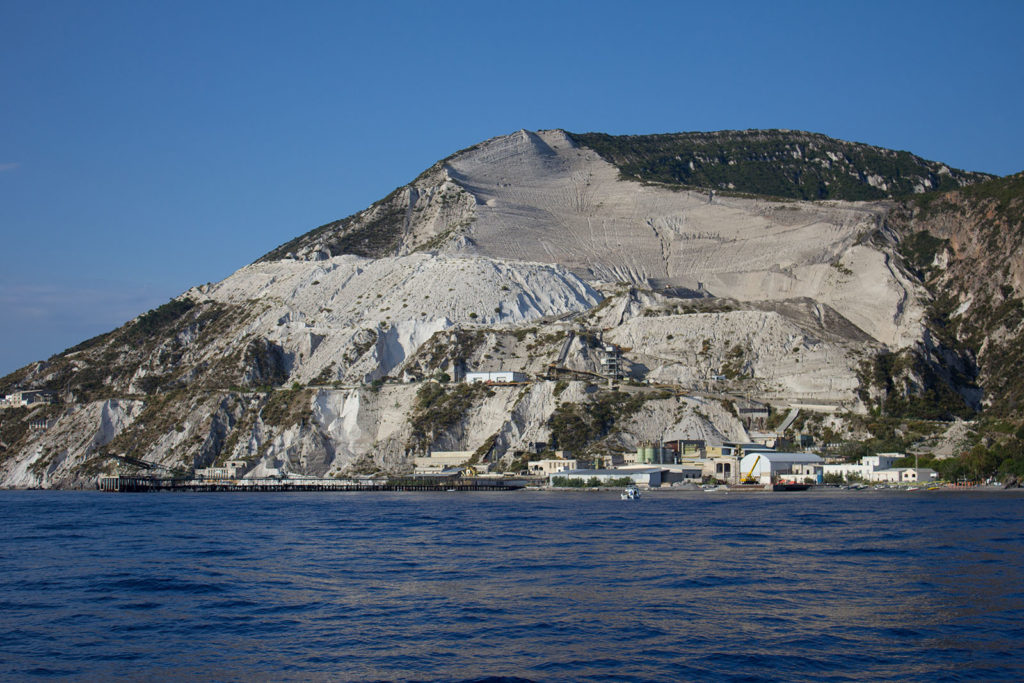The north-eastern part of the island of Lipari, and in other parts, is covered by a layer of very white
pumice
. This was emitted by Monte Pilato, a small hill located between the villages of Canneto and Acquacalda, in the Porticello locality. In reality, very little remains of Monte Pilato, because it had been the site of pumice mining activities since the 1960s.
 What remains now of Monte Pilato is a rock face around 200 metres high, white as marble seen from afar. Mining activities were halted in the mid-1990s, shortly before the Aeolian Islands became a UNESCO World Heritage Site in 2000. Pumice has always been a major attraction on the island.
What remains now of Monte Pilato is a rock face around 200 metres high, white as marble seen from afar. Mining activities were halted in the mid-1990s, shortly before the Aeolian Islands became a UNESCO World Heritage Site in 2000. Pumice has always been a major attraction on the island.
From a naturalistic point of view, its white colour creates an almost unreal landscape. Pumice powder, the result of the erosion of the pumice banks of Monte Pilato, also covers the beach below and all the land around it, and obviously the seabed in front of it too, which has taken on a wonderful turquoise colour over time, almost like a natural swimming pool.
In this corner of paradise, the only note out of tune are the residues of the pumice industry, which have not yet been disposed of. Though the buildings of the 1960s are a wonderful example of industrial archaeology, the industries of the 1990s have left iron walkways and warehouses, soon to be disposed of. From a volcanological point of view, the pumices of Lipari are among the most famous in the world for the purity of their colour, due to the involvement of only one magma during the 19th-century eruption of Monte Pilato.